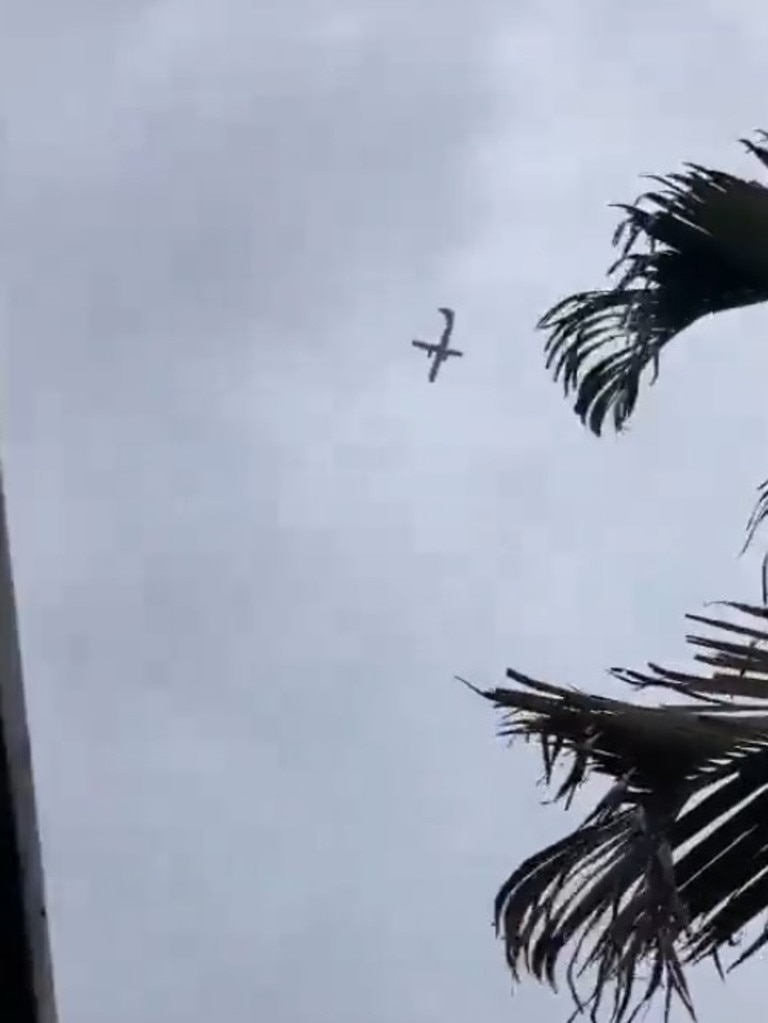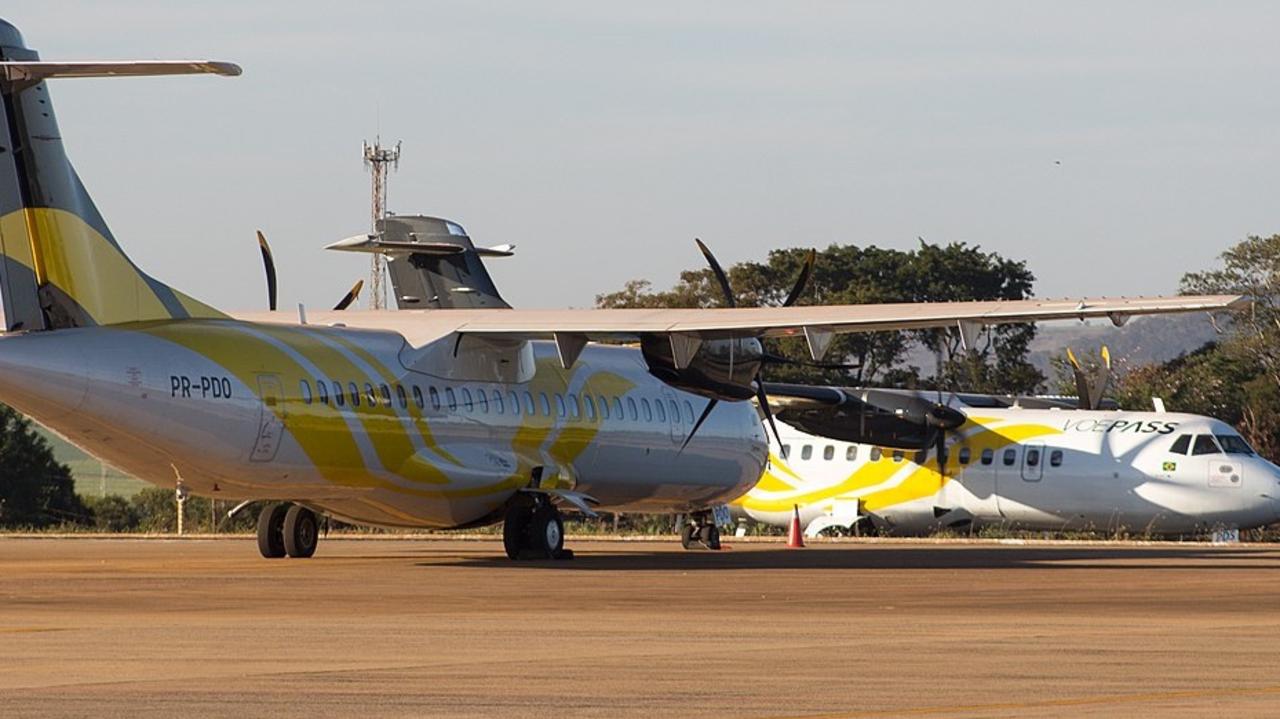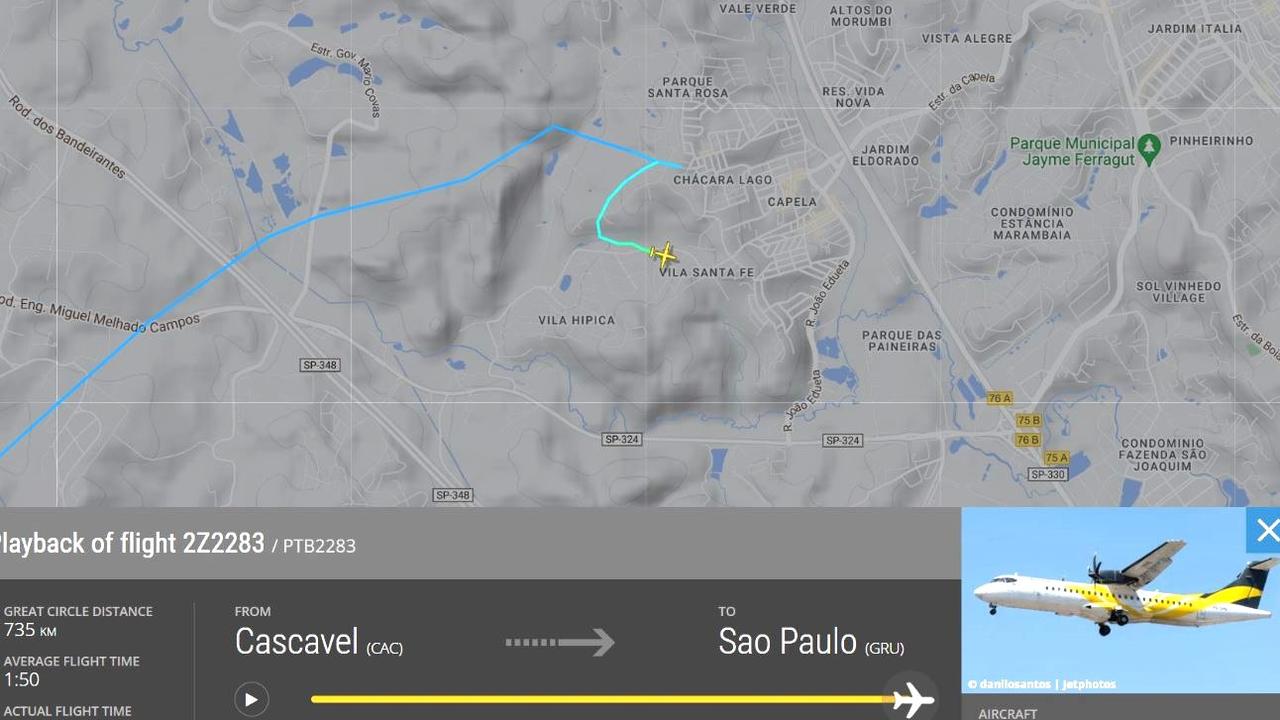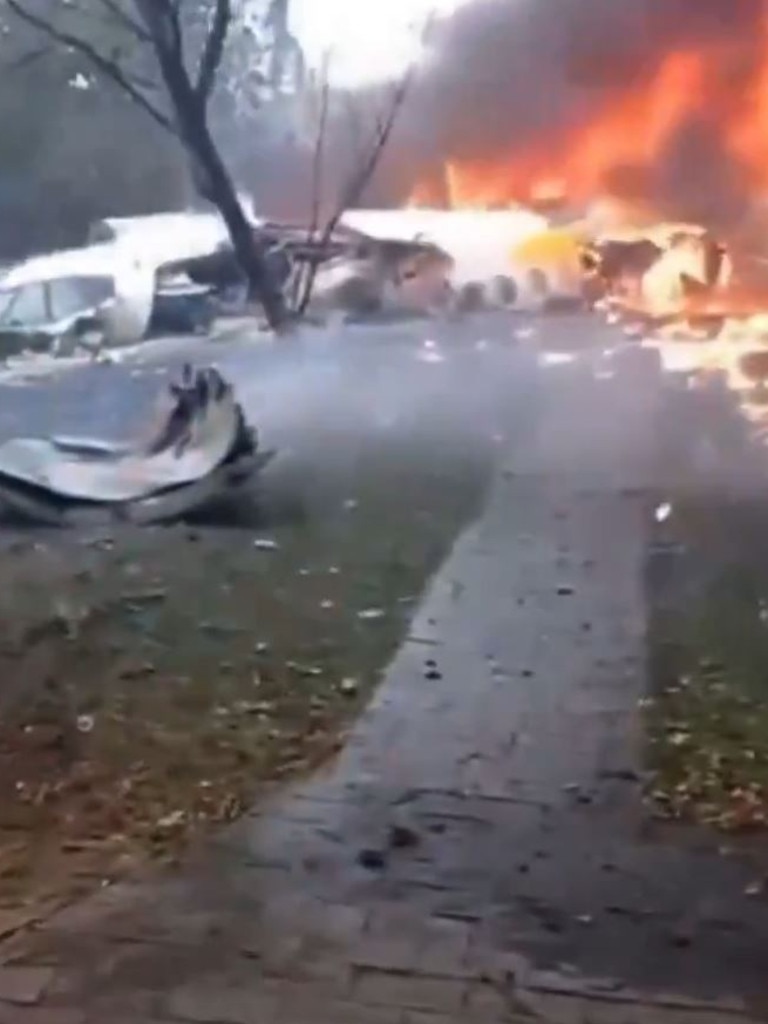‘Graveyard spin’: Passenger plane crashes in Brazil, killing 61
A plane belonging to a Brazilian airline has crashed into the suburbs close to a major city killing all on board.
A passenger plane has crashed into a town close to Sao Paulo, Brazil, killing all on-board.
The terrible final moments of Voepass flight 2283 were recorded by multiple people as it careened through the air dropping by several thousand feet in just 60 seconds.
Brazilian President Luiz Inácio Lula da Silva has declared three days of official mourning for the country “in memory of the 61 victims”.
There were 57 passengers and four crew on board. The airline and state government had initially reported 58 passengers.
‘Graveyard spin’
It is so far unclear what caused the plane to crash.
Top aviation expert Captain Ross Aimer has explained some possible scenarios, while still acknowledging “very little” is yet known about what happened.
He said what people can see in the videos is the aircraft in a “flat spin” before going into a “spiral spin otherwise known as a graveyard spin”.
“It’s a pretty rough thing to get into and even rougher to get out of it,” he told Fox LA.
As for how the plane got in that position, Mr Aimer said there was reports of icing (a build up of ice on the wings can lead to reduced aerodynamics), but also the possibility of engine failure, a flight control problem, or the pilot missing a flight control issue that could cause the aircraft to stall.
The airline said the aircraft took off “without any flight restrictions, with all its systems ready to carry out the operation”.
Flightradar24, a website which tracks flights, said the aircraft cruised toward Sao Paulo at 17,000 feet until 1.21pm on Friday (2.21am, Saturday AEST) when data indicated “a brief loss in altitude, followed a brief gain in altitude, followed by a steep and terminal descent”.
Read more on this below.


Where the plane crashed
The Voepass Linhas Aéreas (a Brazilian regional carrier) plane departed from Cascavel in the southern state of Paraná and was bound for Guarulhos in the state of Sao Paulo, but crashed in Vinhedo.
Vinhedo is a municipality in the state of Sao Paulo, about 80 kilometres northwest of the city of Sao Paulo.
A nearby resident, Nathalie Cicari, told CNN Brasil she watched the plane fall after going outside to investigate a “very loud” noise.
“I went out on the balcony and saw the plane spinning. Within seconds, I realised that it was not a normal movement for a plane,” she said.
Another witness at the scene, Ricardo Rodrigues, told local Band News he “saw many bodies on the ground”.
Dramatic social media videos on Friday afternoon, local time, showed the aircraft spiralling downwards and then an explosion in a residential area.
Other footage recorded the plane apparently dropping towards the ground with no obvious damage. Burning wreckage and a cockpit can be seen in another video.
In airline Voepass Linhas Aéreas’ first statement about the crash, it said: “There is still no confirmation of how the accident occurred.”
It has since released updates, but none have suggested the cause of the crash.

Identifying the bodies
Sao Paulo security forces have begun work to remove the bodies from the crash site and are expected to continue working through the night.
Sao Paulo governor Tarcísio de Freitas said: “We are carrying out all the forensic work and removing the bodies from Vinhedo to the Central IML in Sao Paulo, where there is more infrastructure for the necessary examinations.”
Families of the victims have been instructed to provide medical records to the IML (Legal Medical Institute) to help identify the bodies. This can include radiological, medical and dental exams.
“Any dental treatment, such as root canals, implants, prosthetics, panoramic surgery, and orthodontic braces, will help in the process,” a Sao Paulo government statement said.
“Likewise, any medical treatment for prosthetics, such as pins, plates, fractures, and screws, will also help.”
The airline has released a list of names of all passengers and crew on board.
“At this time, VOEPASS Linhas Aéreas prioritises providing unrestricted assistance to the families of the victims and effectively collaborates with the authorities to determine the causes of the accident,” the airline said.
“VOEPASS Linhas Aéreas informs that the aircraft PS-VPB, ATR-72, flight 2283, took off from CAC [Cascavel Airport] without any flight restrictions, with all its systems ready to carry out the operation.”
Family members wanting information can call 0800 9419712, available 24 hours a day.
Brazilian civil defence authorities stated the plane hit homes as it crashed but its not thought at this point that anyone on the ground died.
A VoePass ATR 72-500 crashed today en route from Cascavel to São Paulo. What the ADS-B data tells us so far, including downloadable granular data: https://t.co/7UJbIAYq2mpic.twitter.com/I59jLuxDR0
— Flightradar24 (@flightradar24) August 9, 2024
Plane’s 24,000 feet a minute drop
The plane involved is an ATR 72-500 turboprop.
ATR, a Franco-Italian aircraft maker and Airbus subsidiary, said its “specialists are fully engaged to support both the investigation and customer”.
Flightradar24 data showed the plane was at 17,000 feet just before the crash.
The website said the aircraft cruised toward Sao Paulo at 17,000 feet until 1.21pm on Friday (2.21am, Saturday AEST) when data indicated “a brief loss in altitude, followed a brief gain in altitude, followed by a steep and terminal descent”.
It said “the highest reported descent rate was -24,064 feet per minute” at eight seconds past 1.22pm.
“The elapsed time from the indication of problem to the final data received by Flightradar24 was 89 seconds,” Flight Radar said in its report.
Earlier, it had shared that during the last 60 seconds of flight, the transponder transmitted a vertical speed between -8000 and -24,000 feet per minute.

Flight Radar added that in the area there was an aviation warning for severe ice between 12,000 and 21,000 feet.
A build up of ice on the wings can lead to reduced aerodynamics which in turn can affect lift and a plane’s ability to fly. It is currently winter in most of Brazil.


The ATR-72 is a popular regional aircraft made by Franco-Italian manufacturer ATR. It was first flown in 1988 and more than 1200 have been built.
It is extensively used by Air New Zealand and Australian air charter service Aerlink, which provides Fly-in-Fly-out (FIFO) services for mining companies.
The last fatal incident involving the type was in 2023 when a Yeti Airlines plane crashed in Nepal.
The flight had been attempting to land in the tourist city of Pokhara, with 72 people on board.
All those passengers died including Sydney teacher Myron William Love, who was among 15 foreign nationals aboard.





